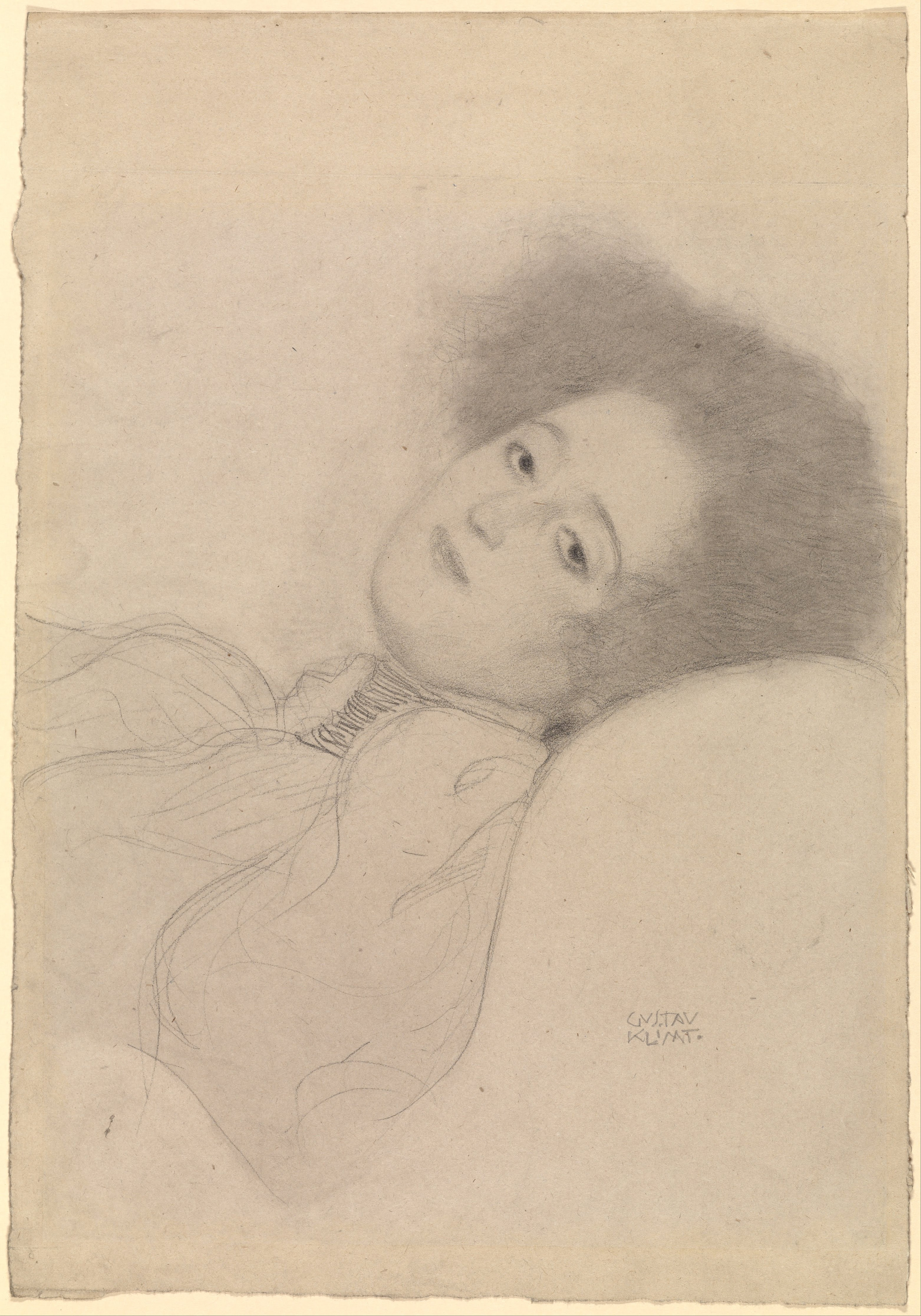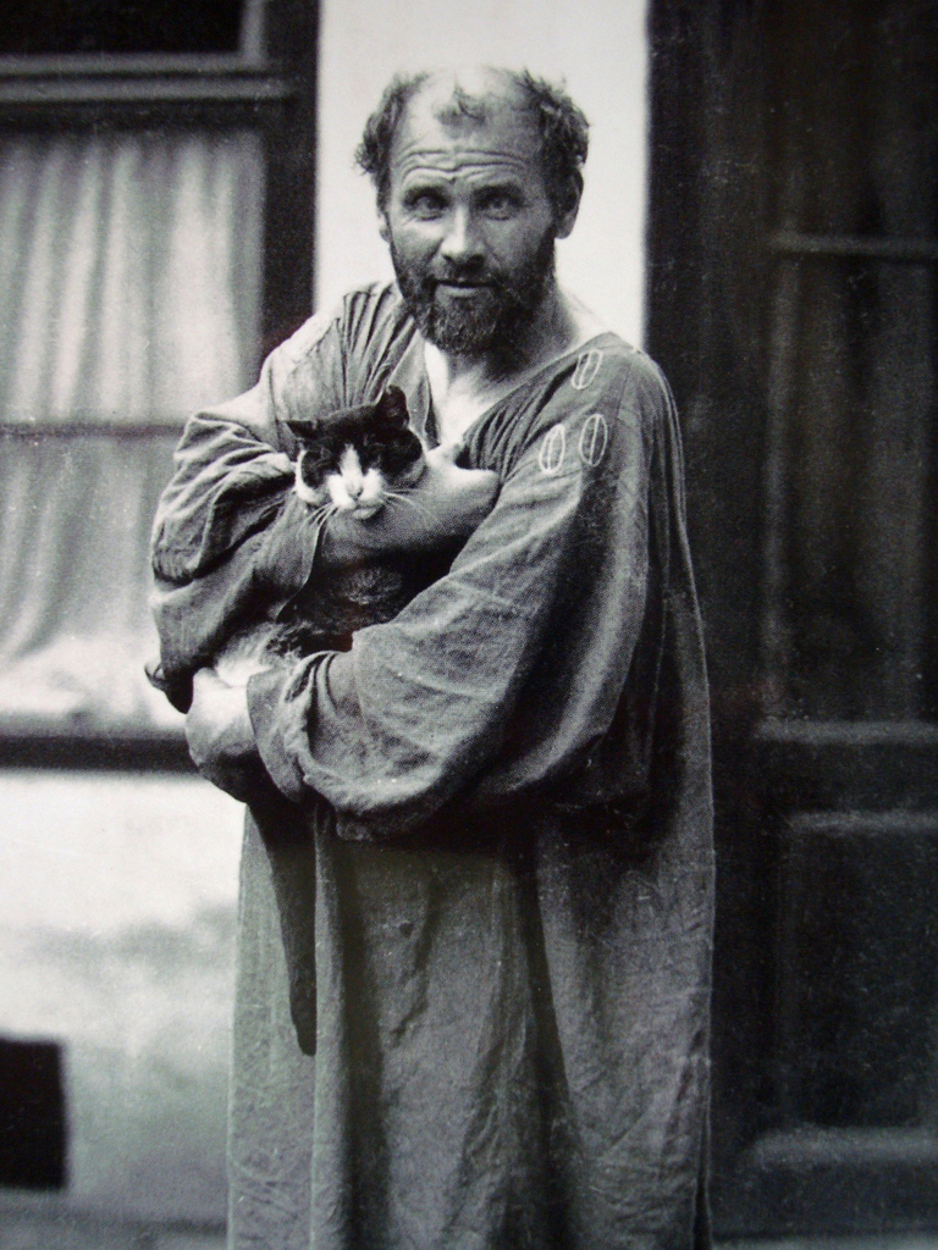In this sensitive portrait, a young woman, her face haloed by a cloud of hair, reclines on a chaise lounge and gazes languidly at the viewer. In contrast to the high degree of finish in his rendering of the head, Klimt treated the sitter's clothing and the back of the chair in a looser, more summary manner, highlighting the palpable emotional connection between sitter and artist. The young woman bears a noticeable resemblance to Sonja Knips, a Viennese socialite whose portrait Klimt painted during the same period. Both the painting and this drawing mark a major turning point in the evolution of Klimt's style. In their soft-focus handling, dreamlike atmosphere, and pervasive eroticism, they reveal the influence of Symbolism, a key element in the art of the Vienna Secession, the avant-garde movement in which Klimt played a central role. The drawing is housed in a contemporary frame designed by the Wiener Werkstätte, a collective of artists and designers with close links to the Secession. It is a fine example of Klimt's commitment to the idea of the Gesamtkunstwerk (total work of art).
P.S. Here you will find Klimt’s unknown portraits you’d never guess were his.


 Gustav Klimt
Gustav Klimt